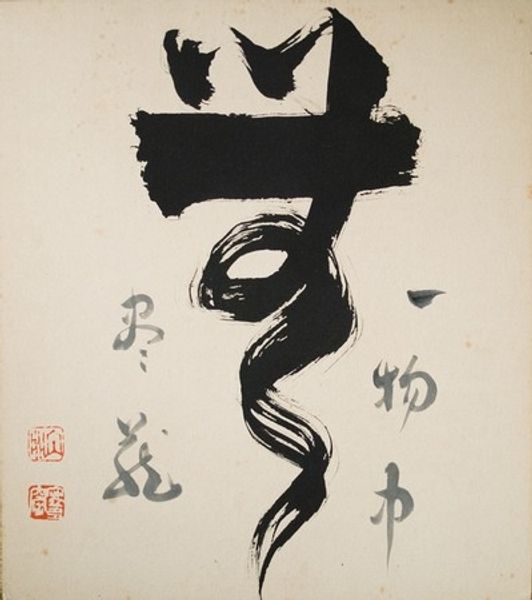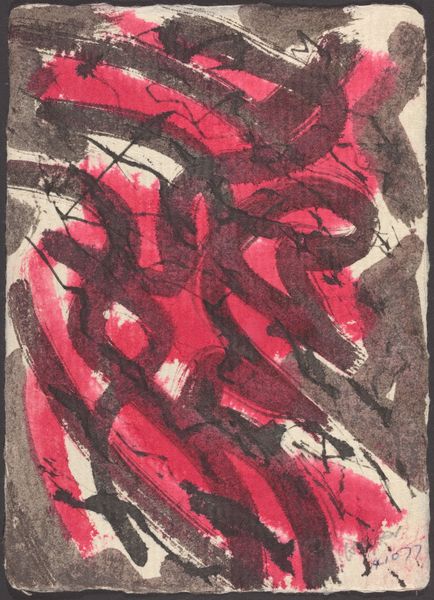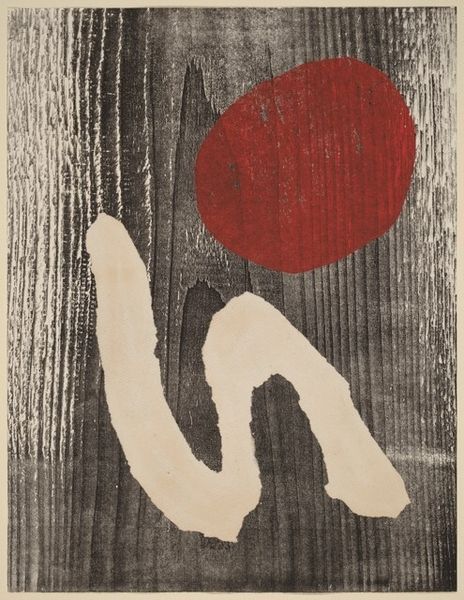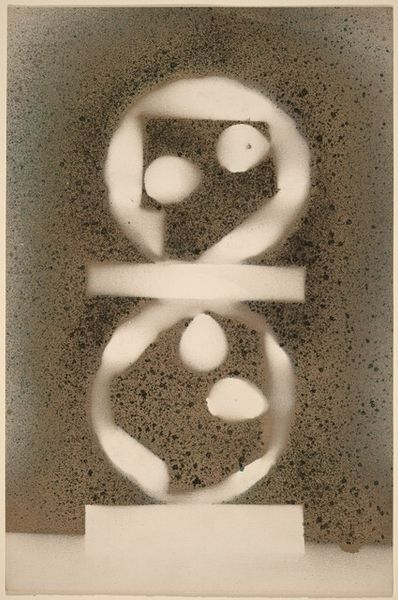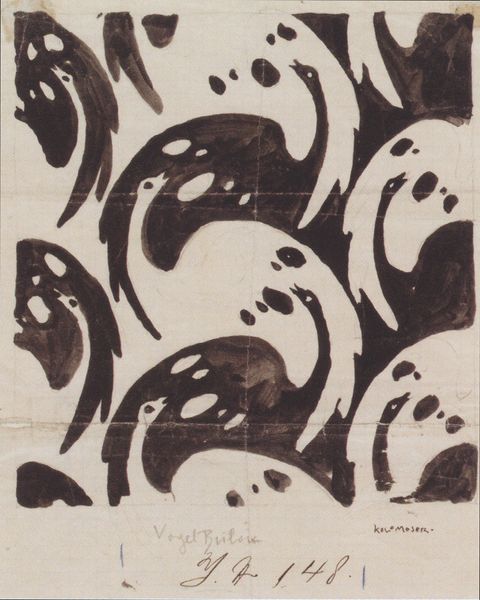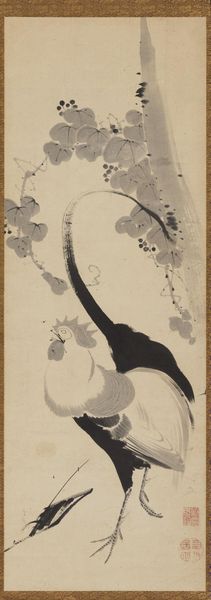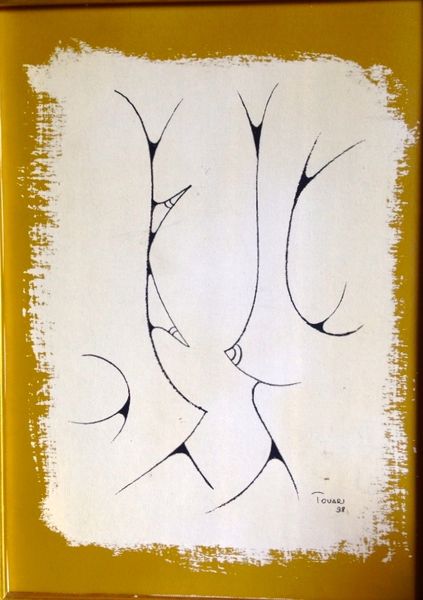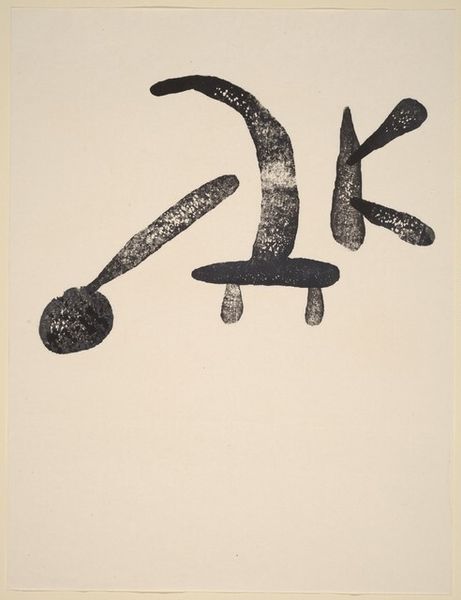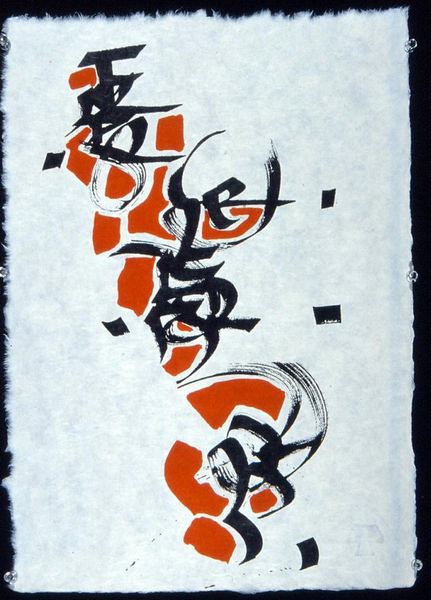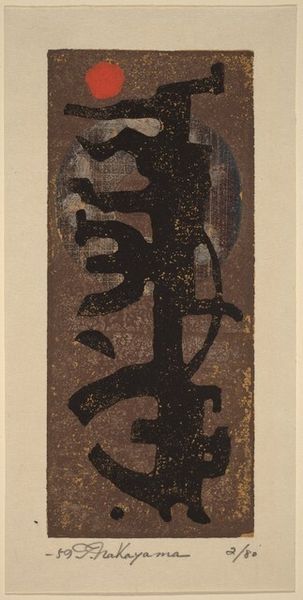
collage, paper, ink
#
stencil art
#
collage
#
pop art
#
paper
#
form
#
ink
#
linocut print
#
abstraction
#
line
#
modernism
Dimensions: 40.5 x 26 cm
Copyright: Henri Matisse,Fair Use
Curator: What strikes me first is how this elegant abstraction by Henri Matisse, titled "Papercut," dating back to 1947, embodies the essence of form with a playful lightness. The contrast between the stark black shapes and the blush background gives it a vibrant pop. Editor: It feels almost buoyant, doesn't it? Considering it emerged in the post-war period, what socio-political currents might have influenced its creation? Was this levity a deliberate reaction to the somber atmosphere? Curator: Undoubtedly. Matisse, grappling with his own health issues and the pervading mood of the time, channeled his energy into this series of paper cut-outs. His late work became his way of rebelling, finding freedom through a flattened perspective, stark simplicity, and embrace of interior design. The use of negative space becomes a symbol of the creative opportunities born of seeming lack. Editor: It’s interesting that you frame it in that light. I’m compelled by the way these pieces shift focus away from established centers of power and onto more everyday practices. The accessibility of the collage method lends itself to questions of accessibility and demystification in art. In other words, by using such readily available materials as paper and ink, Matisse levels the playing field between creator and the consumer, allowing each the possibility of personal creative agency. Curator: Exactly, his cut-outs, in a way, democratized art-making, emphasizing gesture, shape, and the raw immediacy of creation. Despite its seemingly simple aesthetic, "Papercut" serves as a powerful reminder that even in the darkest of times, there is still room for playfulness, experimentation, and vibrant expressions of the self. Editor: I agree. Examining how he transitioned into using the line between drawing and sculpture by adopting the simplicity of paper cutouts forces us to reassess what artistic "mastery" looks like and for whom it is available. And beyond the beautiful simplicity and immediacy that they show in artistic method, their visual character reminds us of the urgent need to continually renew and re-contextualize the socio-political values that underlie visual aesthetics.
Comments
No comments
Be the first to comment and join the conversation on the ultimate creative platform.

